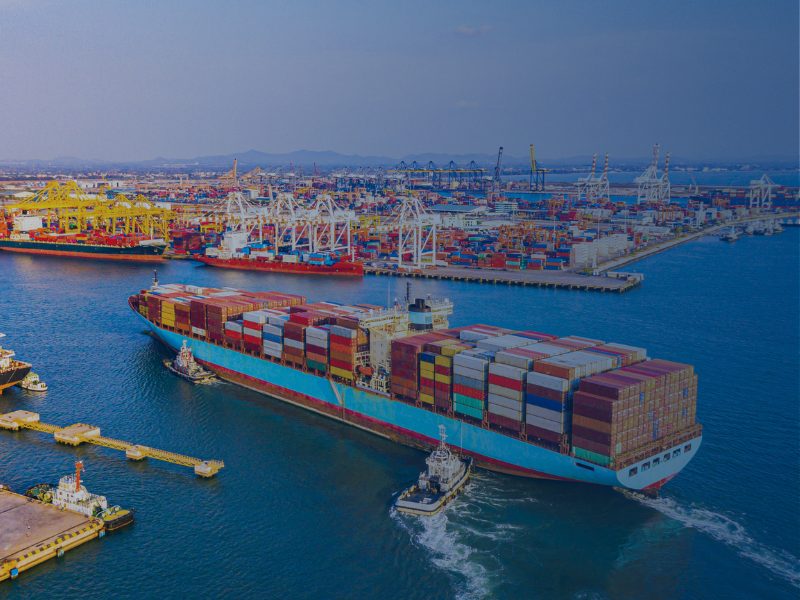Companies are expediting shipments to mitigate tariff uncertainty and preempt logistical bottlenecks ahead of the new deadline set by Trump and Xi.
The renewed extension of the trade truce between the United States and China has once again brought the global supply chain into sharp focus. President Donald Trump signed an order preventing US tariffs from rising to as high as 145%, and Chinese tariffs from reaching 125%—levels that would have effectively halted exports and imports between the two economies.
The decision grants a 90-day extension to the current tariff relief framework, now set to expire on November 10. Until then, existing terms remain in place: Washington maintains a 30% tariff on Chinese goods—comprised of a 10% base rate and an additional 20% linked to fentanyl—and Beijing continues to apply a 10% rate on US products.
The executive order was issued following an ambiguous remark by President Trump to reporters, in which he stated, “We’ll see what happens. They’ve been treating us fairly well. The relationship between President Xi and me is excellent.”
However, President Trump signaled the possibility of imposing tariffs of up to 300% on imported semiconductors, a measure that would substantially heighten uncertainty across global electronics supply chains. In parallel, the US administration announced a partial relaxation of export controls on artificial intelligence chips, authorizing certain companies to supply less advanced models to China under closely monitored regulatory frameworks.
Early Shipments and Port Congestion
The logistical impact of this decision is already unfolding. Following the announcement of the initial truce in May, Chinese exporters had anticipated the scenario and accelerated container shipments to the United States to move goods within the tariff-free window. This approach triggered a surge in ocean freight bookings: according to the logistics platform Vizion, cargo volumes from China to the US rose by as much as 277% during that month.
This shift had an immediate effect across the operational chain:
- Container booking systems became saturated
- Port facilities experienced overload
- Processing times for goods grew significantly longer
Companies moved to secure customs clearance for their shipments ahead of the deadline, with many having their logistics operations in place even before the extension was officially confirmed.

Ocean freight from China to the US typically takes between 25 and 30 days. When customs clearance times are factored in, the entire process can extend to 35 days. In this context, every day is decisive. Companies are prioritizing the release of cargo to avoid being caught off guard by any policy shift that could alter the current tariff structure.
Companies Looking Ahead
In this climate of trade uncertainty, companies face two immediate pressures:
- Capitalizing on the more favorable tariff framework
- Avoiding exposure should the Trump administration decide to reinstate steep increases.
The lack of predictability complicates inventory management and disrupts restocking schedules. Logistics providers must also adjust to this ongoing volatility. Warehouse operators, customs brokers, and transport companies absorb the initial impact when volumes surge. Many of these players operate with minimal planning buffers and are forced to make real-time decisions in response to sudden spikes in demand.
While the extension has brought immediate relief, the broader outlook remains unstable. There are no assurances that tariffs will remain unchanged once the new 90-day period expires. As seen in previous instances, any adjustments ultimately hinge on President Trump’s discretion and the tone of ongoing negotiations with Xi Jinping—talks that continue to be marked by ambiguous signals from both sides.
Against this backdrop, businesses are favoring short-term strategies. The current focus is on accelerating shipments before a potential new round of tariff increases. The approach is straightforward: move as much cargo as possible under the current, predictable rates, and adjust logistics frameworks once the next move from the White House becomes clear.

In the absence of a clear roadmap toward a more stable trade agreement, the supply chain continues to operate on uncertain ground. As the 90-day clock resets, companies are adjusting their plans with the understanding that the truce could come to an end at any moment.
Aerodoc’s Role Amid the Trade Truce
At Aerodoc, we play a key role in helping technology companies respond to the current trade truce with China and accelerate their operations. With over 25 years of experience in international logistics, Importer of Record (IOR) services, and customs compliance, we operate across several critical fronts relevant to this scenario:
- Compliance with new US import regulations from China: Since March 2023, US authorities have required that the factory’s postal code be declared to identify goods potentially linked to the Xinjiang Uyghur Autonomous Region. At Aerodoc, we conduct advanced validation of cargo origin to prevent blocks or holds, managing the required documentation and supporting evidence accordingly.
- Time Optimization and Customs Risk Mitigation: Through pre-compliance procedures and physical inspections at origin, we identify discrepancies prior to shipment and adjust documentation to reduce the likelihood of intrusive inspections and additional costs.
- DDP Services with IOR for High-Value and Technology Imports: We manage the entire door-to-door process, covering duties and taxes on behalf of the client. This allows direct delivery within the US without the need for a local legal entity.
Contact our team of experts to learn more about how our services can support your operations.
Q&A
- Which industrial sectors are most exposed to volatility stemming from the US-China Trade Truce? High-tech manufacturing, automotive, and telecommunications are particularly vulnerable due to their reliance on cross-border supply chains and critical imported components.
- How can companies mitigate logistics risks amid a potential collapse of the US-China Trade Truce? Key strategies include supplier diversification, alternative route planning, and partnering with experienced DDP and IOR providers to reduce exposure to abrupt tariff changes.
- What would be the impact of a definitive breakdown in the US-China Trade Truce on importing SMEs? SMEs would face disproportionate challenges, including increased costs, limited agility, and heightened customs risks due to constrained operational capacity.
- What long-term strategies are multinational firms adopting in response to US-China Trade Truce uncertainty? Leading companies are relocating operations to nearshore markets like Vietnam and Mexico while strengthening trade compliance infrastructure to navigate future disruptions.




